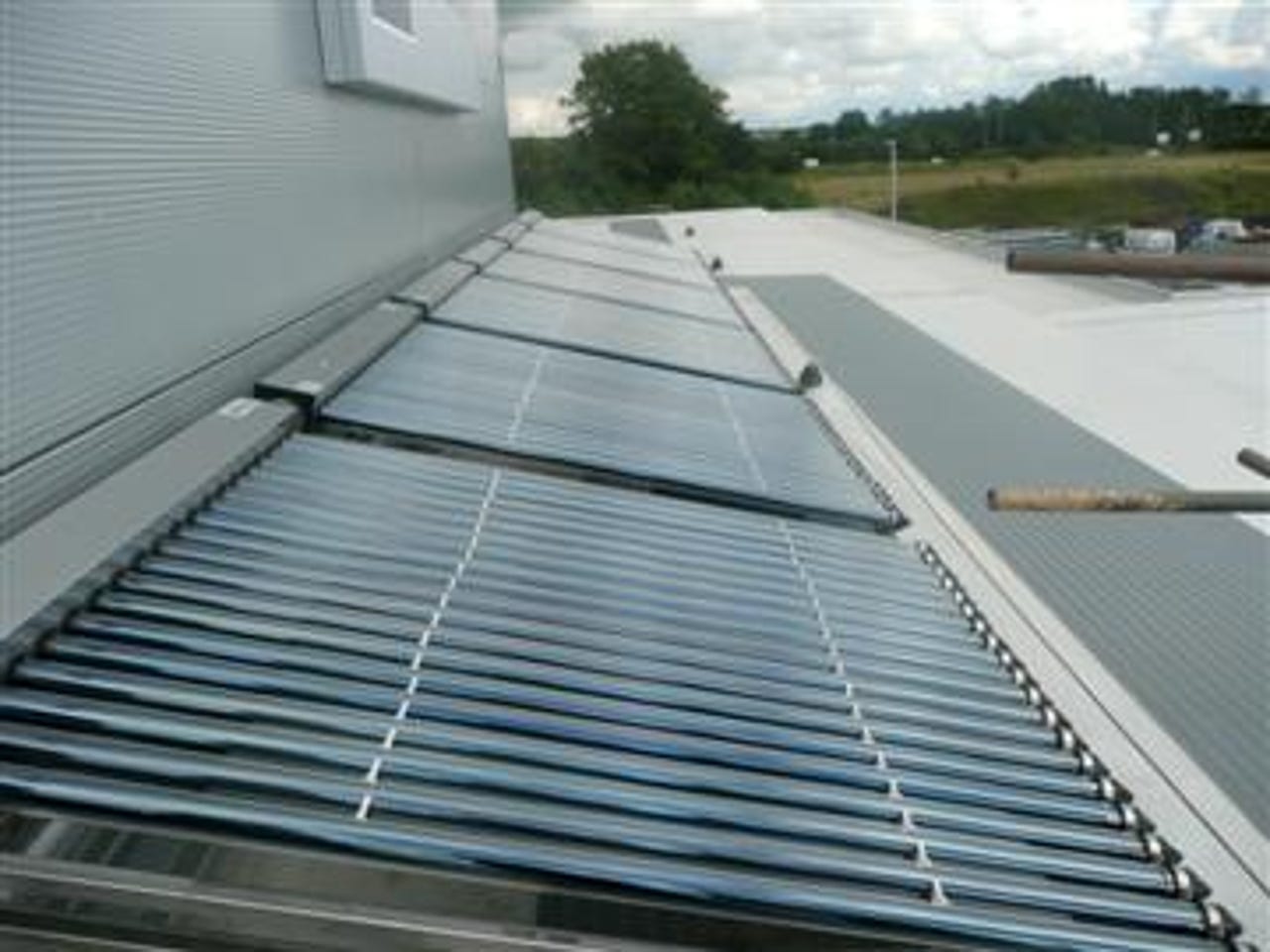Photos: Scots HQ is green office of the future

NG Bailey turns up heating efficiency with solar cell glass and remote-controlled windows
Building services company NG Bailey has opened a Scottish HQ, consolidating a number of other sites and showcasing a number of features that save or create energy as a way of introducing their customers to the possibilities of green offices.
Taken individually each of these methods has little effect but combined will save the company £3.3m over the projected 60-year lifetime of the building. The building has achieved an Energy Performance Certificate A rating.
Photo credit: Julian Goldsmith/silicon.com
The main entrance to the building, called Solais House, faces south and so gets a larger amount of sunlight than the other aspects of the office. The exterior wall of the foyer is almost completely photovoltaic glass, which generated 350kWh over the first six and a half weeks since the building came into operation. The glass costs £750 per square metre.
The glass is manufactured with integrated solar cells, with the cells acting as a shade for the sunniest side of the building. As one NG Bailey executive said: "We get a reduced cooling load size and some electricity for free."
Photo credit: Julian Goldsmith/silicon.com
The air conditioning of Solais House relies on a large degree of natural airflow.
The windows open and close automatically by computer, regulating the temperature inside with cooler air from outside. The air is drawn through the building by a similar operation in the skylights.
The building uses an abnormally large amount of natural light to offset the energy used to power its electric lighting - all LED bulbs - and it is supported by a large amount of skylights afforded by the relatively small air-conditioning system on the roof.
Photo credit: Julian Goldsmith/silicon.com
Solais House has its own weather data collection system that uses weather algorithms to adapt the heating, cooling and air refreshment systems in relation to outside conditions.
Photo credit: Julian Goldsmith/silicon.com
This CO2 sensor is used by the building management system to calculate the quality of the air in the office. If the air gets too stale, the windows automatically open to let fresh air in.
Photo credit: Julian Goldsmith/silicon.com

Solar thermal collectors on the roof of the building are one of a number of methods used to heat the building's water supply. According to one NG Bailey executive, the system provides 60 per cent of the energy needed to heat Solais House's domestic water.
These vacuum tubes are considered one of the more efficient ways of collecting heat from the sun. The vacuum layer means there is very little conducted heat loss through the tubes.
Photo credit: Julian Goldsmith/silicon.com
The sun is also directed down into the building through sun tubes - highly polished tubes of aluminium that reflect sunlight on to a diffuser. The light source on the left is the result.
The sun tube and the electric light work in tandem, with the latter automatically dimming when the sun comes out.
Photo credit: Julian Goldsmith/silicon.com
Within the grounds of the building is a borehole, extending more than 100ft below the ground and used to tap into the natural water table. The water is between 12 and 15 degrees centigrade and is compressed to heat it further. It is passed through a heat exchanger to provide air cooling as well as heating.
The building also has a rainwater harvesting system. The water is used to flush the toilets, which are calibrated to use between two and four litres per flush.
Photo credit: Julian Goldsmith/silicon.com
Many of the energy saving or generating devices are controlled centrally using a building management system. Taking on board data about the levels and distribution of personnel throughout the building, the system makes sure empty rooms aren't cooled, heated or lit unnecessarily.
By implementing a central control system, heating and cooling systems aren't fighting with each other to maintain a constant level temperature, wasting energy in the process.
Even the building's server room is efficiently cooled. The room is coated with a paraffin-based phase change material that melts at 26 degrees centigrade, absorbing heat that can be released at night.
Photo credit: Julian Goldsmith/silicon.com